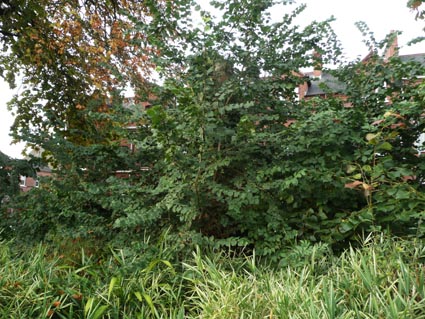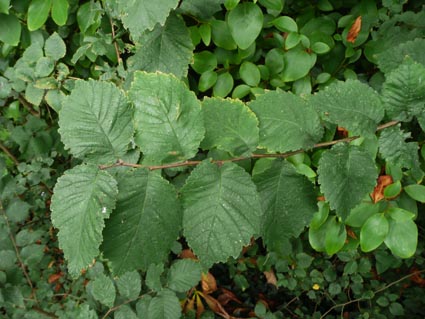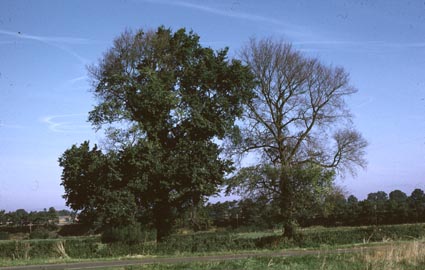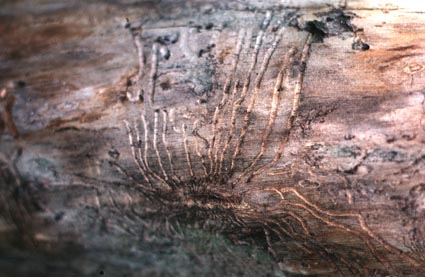Ulmus glabra Huds.
Common elm
All the native elm trees in South Belfast were killed by Dutch elm disease in the 1960s and 1970s. The fine elms that fronted the houses on the site of the present Students’ Union, at Queen’s Elms Halls of Residence and in the Botanic Gardens were wiped out by the disease, yet there are still elms in Botanic Gardens.
Dutch elm disease is a disease of two parts: the pathogen is a fungus – Ophiostoma novo-ulmi – which attacks and blocks the xylem, leading to premature yellowing of the leaves in summer and eventual death of branches and finally the whole tree. The fungus is carried from tree to tree by a vector, usually Scolytus multistriatus. This beetle lays a row of eggs under the bark of the elm tree. When these hatch the grubs eat their way through the soft under-bark making a characteristic pattern of galleries (see below) and eventually fly off to attack another tree. This activity causes minimal damage to the trees, but in the process the beetles infect trees with the fungus. The beetle appears to select stems that are greater than about 8cm diameter.
Another aspect of this biological complexity is that elm is a tree that readily produces new shoots from the roots if it is killed or felled. What has happened in the Botanic Gardens is that the three elm trees that bordered Colenso Parade were attacked by Dutch elm disease and were felled. New branches sprouted from the roots and then continue to grow as multi-stemmed shrubs. Based on experience, we presume that when these stems reach sufficient diameter to be attractive to the Scolytus beetles, they will again be attacked and will die to be replaced by new shoots from the roots. These multi-stemmed elms can be seen in hedges all over Northern Ireland. So far there is no evidence that they will ever reach sufficient maturity to set seed, so the long-term future of elms in Ireland remains in doubt.




Upper photos taken in 2014 in Belfast Botanic Gardens, lower photos (copyright) from Flora Hibernica by Pilcher and Hall, Collins Press 2001.
Copyright: Friends of Belfast Botanic Gardens.
